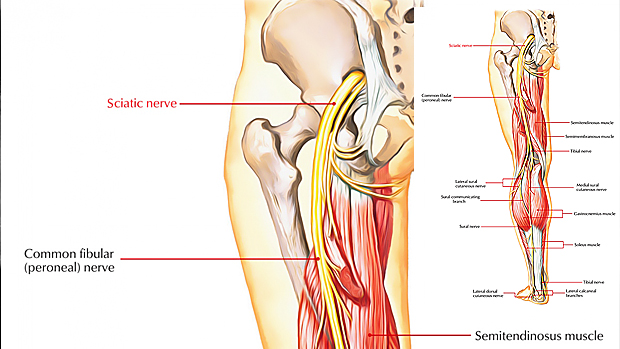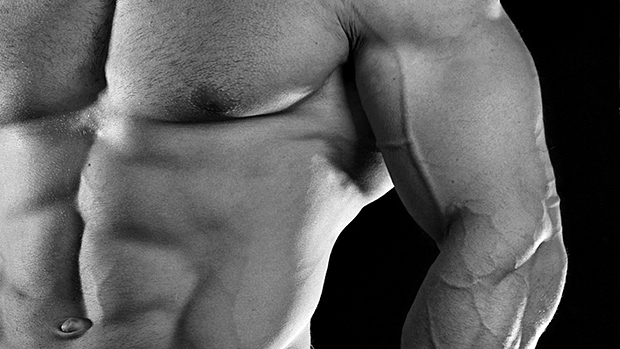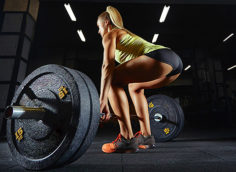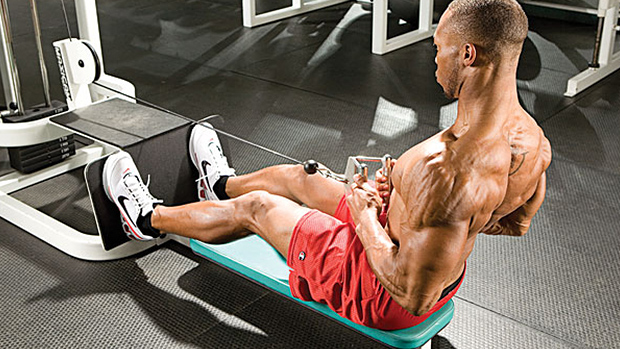Some days your deadlifts feel great and some days they just feel like crap. It may not seem like there's any rhyme or reason to this, but one possible explanation is how well your sciatic nerve is moving.
The Sciatic Nerve

It's the longest nerve in the body. As a continuation of your spinal cord, it runs through your hips, between the numerous muscles, down the back of your legs, and all the way down to the sole of your foot.
This nerve isn't hugely elastic. It runs between the muscles and tissues, and it should slide nicely past them as you move around. When you bend over, you're effectively pulling the slack out of the sciatic nerve.
If there are muscles and tissues that are somewhat inflamed – potentially just from normal training – they can compress the nerve slightly and stop it from sliding between the tissues smoothly.
This causes a kind of nervous system resistance, potentially reducing muscle activation and making you fractionally weaker in certain positions.
Solutions
Exercises called nerve sliders, tensioners, and mobilizers have been used for a long time by physical therapists to treat pain. Recently, there's been research into how they might affect performance.
Not all of this research has been conclusively positive. Nerve mobilization techniques would only be useful if you had a lack of nerve mobility that day, which blurs things for research purposes.
A recent study has shown a benefit to using nerve mobilization techniques prior to counter-movement jumps (1). I've had great success with clients – even world-record holders – with these techniques.
The Pre-Deadlift Routine
This is a nerve mobilization sequence to use specifically before deadlifting. The standing position and knee extension reflects the movement you're preparing for. The first two positions are with your feet crossed each way. The third position is with feet together. The last is with feet in your deadlift stance. Do ten slow reps of knee extensions in each position.
The different stances lead to different muscular tensions through the lower body. They'll ensure whatever might be limiting the nerve movement is addressed.
It's crucial to let the spine round and keep the chin tucked throughout. This keeps tension on the spinal cord and, in turn, tensions the sciatic nerve from the top end throughout for better results. You'll feel a kind of electrical, tingly sensation that's uncomfortable at end range if you have some nerve tension.
Every time you bend your knees you'll release the tension. As you straighten them again you'll re-tension the nerve. This encourages the nerve to slide between the muscles and tissues and frees up movement.
If you have serious shooting pain, loss of balance, loss of sensation, or the tingles continue for a while after you stand up, that can indicate a nerve root problem and you should NOT continue with the exercise. Instead, seek professional assistance. However, that's extremely rare.
The position shown on the video mimics the start of the deadlift where, as you break the ground, the knees extend faster than the hips because of the bar position. Straightening the legs potentially tensions the sciatic nerve more as the bar breaks the floor.
We don't want nerve tension in that position, so completing this sequence as part of your warm-up will reduce the chances of having a weird deadlift day where it feels like there's a flat spot between breaking the floor and passing your knees.
The better your deadlifts feel session after session, the better the muscle recruitment, and the more progress you make over time... all thanks to a little nerve mobilization!
Reference
- Aksoy, C. C., Kurt, V., Okur, I., Taspinar, F., & Taspinar, B. (2020). The immediate effect of neurodynamic techniques on jumping performance: A randomised double-blind study. Journal of Back and Musculoskeletal Rehabilitation, 33(1), 15-20. doi: 10.3233/bmr-170878




